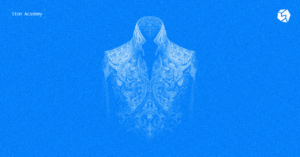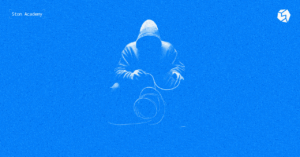
In this article you’ll learn what’s live now for the MemeRepublic campaign: a cross-chain entry path where participants start with assets on other chains and finish with a TON meme token in one coherent flow. It isn’t a how-to or a pitch; it’s a concise, high-level explanation of the production system in place.
In #STONchronicles we share the technical breakthroughs and product milestones that showcase our commitment to building the future of DeFi on TON.
The challenge
The MemeRepublic campaign needs broad, low-friction participation. Many interested swappers sit on Ethereum, BSC, Solana, or Tron, not on TON. Forcing manual bridges, wallet swaps, and DEX hunting kills momentum and trust. The result: drop-off before anyone even reaches TON.
ℹ️ MemeRepublic is a 10-week, community-driven contest backed by a $1,000,000 fund and powered by the entire TON ecosystem. Creators, fans, and builders unite to test who can craft the next legendary meme token.
Our solution
Together with NEAR Intents, we’ve built a layered system: NEAR Intents coordinates the cross-chain promise and delivery, while Omniston handles TON-side price discovery and execution.
We separate responsibilities cleanly:
- Front end at ton-intents.com: captures the outcome you want (“swap X on chain A → token Y on TON”).
- NEAR Intents: obtains verifiable quotes from decentralized executors (“solvers”), enforces your min-out and deadline, and commits one solver to fulfill the order.
ℹ️ Min-out: the fewest units you agree to receive; protects you from excessive slippage.
- Solver: moves value to TON using its chosen rails (inventory/netting/bridges), subject to the constraints.
- Omniston (STON.fi’s smart liquidity router on TON): discovers the best route across TON DEXs, pools, and multi-hop paths; executes the swap for the target token.
What happens under the hood (step-by-step)
You choose a source asset, a target meme token in the app, and state a min-out — a minimal amount of a target token you want to get. You sign an intent. A solver is committed to bring assets onto the TON blockchain. Omniston then routes the TON-side swap across aggregated liquidity for the best executable price. If markets move and the constraints can’t be met, you fall back to receiving the inbound asset on TON — never worse than your stated terms.
- You sign an intent encoding source chain/asset/amount, target token on TON, min-out. You sign a transaction on the source chain. If this can’t be executed or verified, nothing moves and your funds remain in the original asset on the source chain.
ℹ️ Intent: a signed, outcome-first order that says “convert asset X on chain A to token Y on TON, at least Z tokens (min-out).”
- Solvers quote; the system commits one under those constraints (quotes expire fast; stale ones are rejected).
ℹ️ Solver: a competing executor that can fulfill an intent within its constraints.
- Funds land on TON (inbound asset).
ℹ️ Inbound asset: what arrives on TON before the final swap. In our case the inbound asset is a TON token.
- Omniston routes the swap to your target token using the best available path across TON DEXs/pools; if prices shift, it refreshes the route rather than forcing a worse fill.
ℹ️ Omniston: STON.fi’s TON‑wide smart liquidity router. It discovers and executes the best route to the destination token by querying major TON DEXs and pools in real time. It can split orders across venues or use multi‑hop paths to minimize price impact. If market conditions shift before execution, Omniston requests a fresh quote rather than forcing a worse‑than‑promised fill.
- Settle or fallback: deliver the target token if min-out is satisfied; otherwise deliver the inbound asset (TON tokens). Either way, no stranded funds.
Example
You want 0.25 ETH → UTYA on TON, with min-out 12,300 UTYA.
- You sign the intent. A solver is committed. If anything fails before funds leave Ethereum, the intent simply reverts — nothing moves.
- Once the solver’s transfer is verified on TON, the inbound asset arrives to TON.
- Omniston queries major TON venues, simulates outputs, and executes the best route.
Outcomes:
- If output ≥ 12,300 UTYA → you receive UTYA.
- If not → you receive the inbound asset on TON (TON tokens). Your ETH never left without a verifiable commitment, and you never take a worse-than-promised swap.
Why this matters for users
- Chain-agnostic entry: start where your funds already are; arrive on TON in one coherent flow.
- Better realized prices: Omniston aggregates liquidity across TON DEXs and multi-hop paths, reducing slippage during volatile windows.
- Predictable operations: the intent layer handles cross-chain guarantees; Omniston handles TON-side price discovery and execution. Each side can improve independently without breaking the flow.
What builders can take away
This isn’t a flashy widget; it’s a clean split of responsibilities.
- Simple split of roles: intents move value to TON, Omniston finds the best route on TON.
- The intent layer coordinates cross-chain value movement with verifiable promises.
- Front ends speak in outcomes; back ends watch commitments and receipts.
- Predictable constraints: each order defines minimum received and expiry; stale quotes aren’t used.
- Safety first: custody stays with the user until settlement is proven. No partial bridges, no stranded funds.
- Defined fallbacks: revert on source if the cross-chain leg can’t proceed; settle to the inbound asset on TON if the swap can’t meet terms.
- Durable integration surface: as new bridges/DEXs appear, results improve without contract changes.
The bottom line
For the MemeRepublic campaign, Omniston + NEAR Intents turns “any-chain assets → TON memecoins” into a single, verifiable flow: users state the outcome, solvers compete to deliver, Omniston routes the best TON-side swap across aggregated liquidity, and settlement is guaranteed under your min-out and deadline. For users, that means predictable fills without bridge gymnastics; for builders, one clean integration that scales as new venues appear. More importantly, this is a template that extends beyond TON: the same intent-first + smart-routing stack can connect liquidity surfaces across ecosystems, making cross-chain value movement feel like one network.





